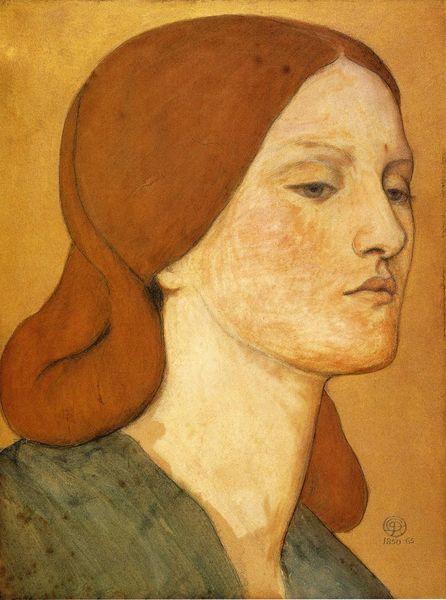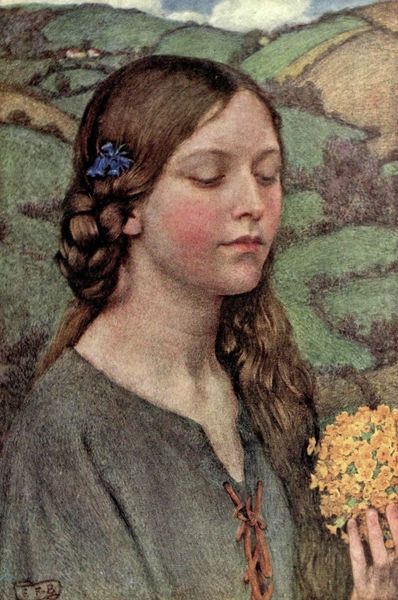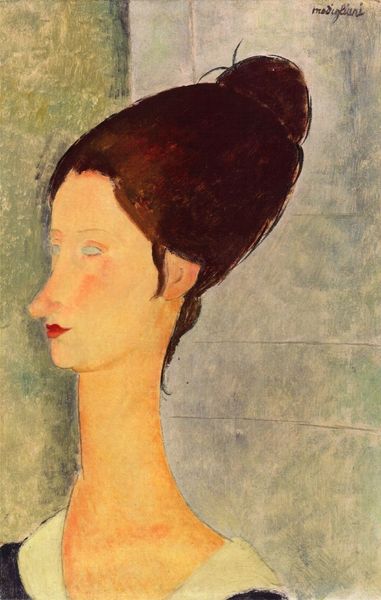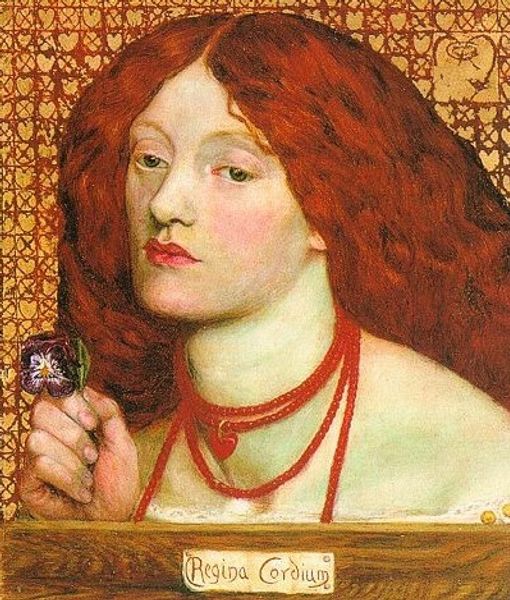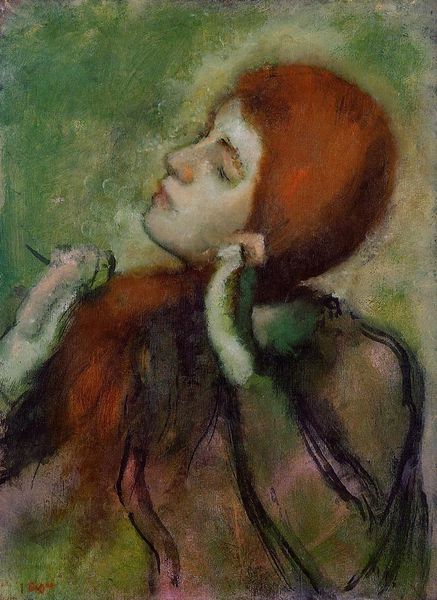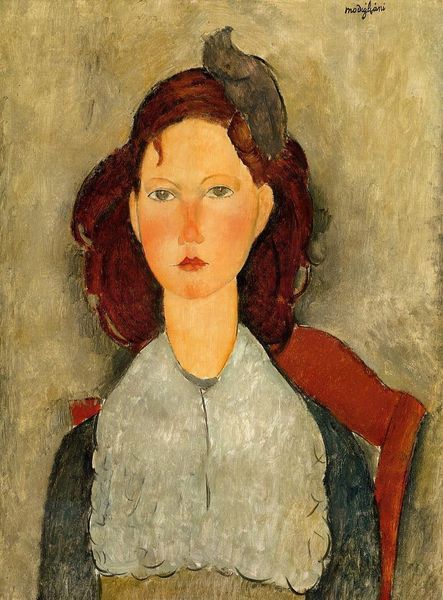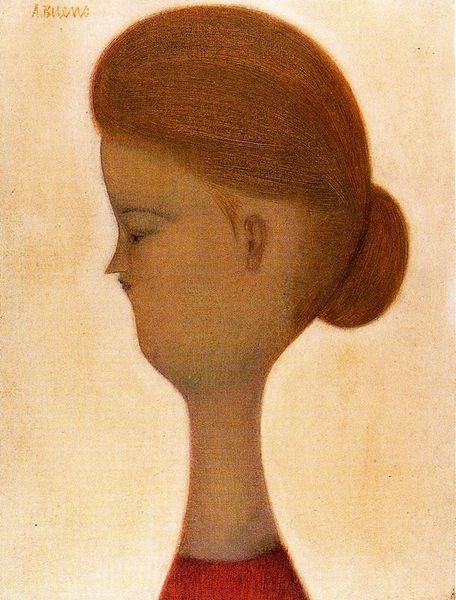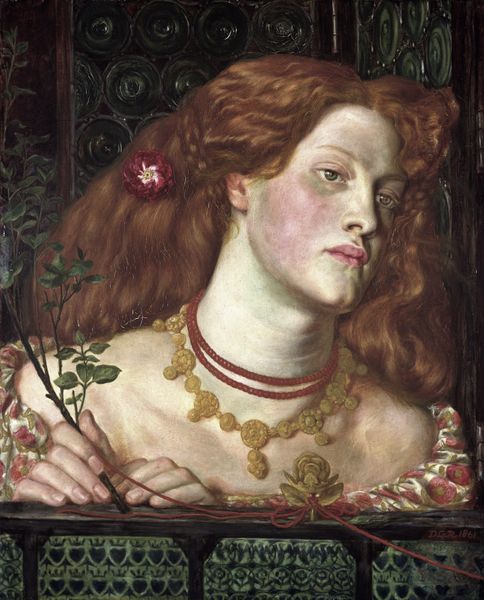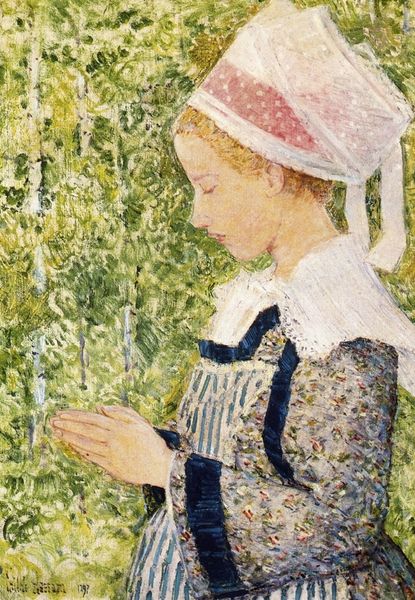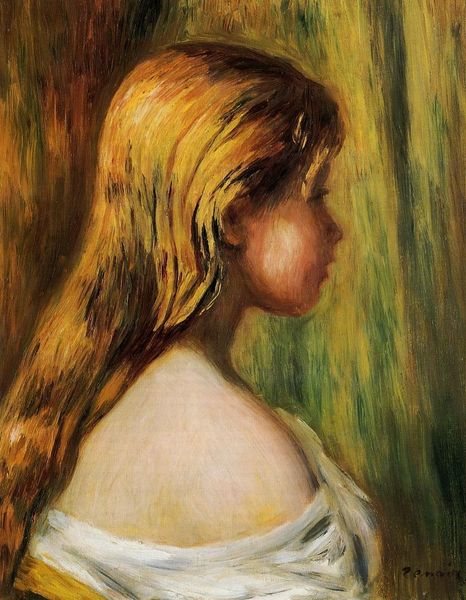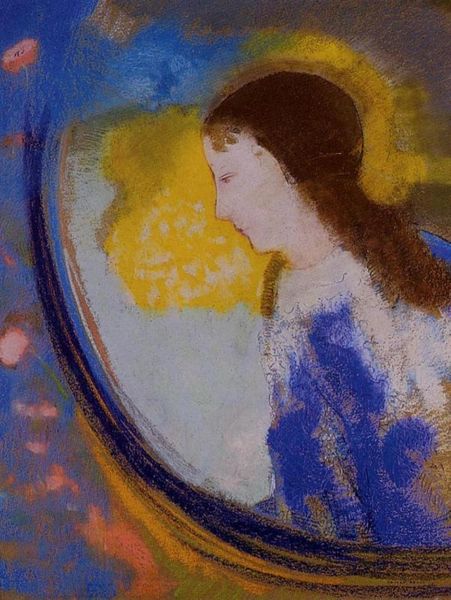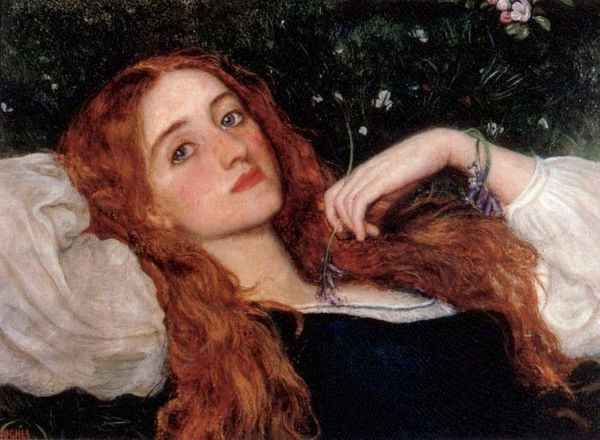
drawing, coloured-pencil
#
portrait
#
drawing
#
coloured-pencil
#
figuration
#
romanticism
#
pre-raphaelites
Copyright: Public domain
Curator: Looking at this drawing by Dante Gabriel Rossetti, titled "Elizabeth Siddal," I’m immediately struck by its subdued intensity. The green backdrop amplifies her features. There is something both captivating and haunting in the simplicity, wouldn't you agree? Editor: Absolutely. That stark, almost electric, green feels like it's deliberately flattening the space around her. It turns her into an icon, a figure ripped from the conventions of her time. But is it flattering, I wonder? It casts a harsh light. Curator: Harsh maybe, but it gives her this almost otherworldly glow. You know, Lizzie was his muse, his lover... it feels incredibly intimate, seeing her like this. It's a portrait of devotion, or maybe obsession. Look how he renders her hair – that flaming, auburn cascade. Editor: Obsession, yes! Think of her role, though. Here’s this working-class woman transformed into a Pre-Raphaelite icon—almost an object of aesthetic contemplation and little else. These artists idealized the Middle Ages. But whose Middle Ages? And at what cost? Did this portrayal really reflect Lizzie's inner world or only what Rossetti and his circle wanted to see? Curator: You know, it’s easy to judge them through a modern lens, but Rossetti truly saw her, or perhaps believed he did, in ways no one else did. They were so entwined artistically. Plus, this drawing, crafted with such careful coloured pencil strokes, feels like a genuine attempt to immortalize her essence. It's not like he relegated her solely to allegorical roles; it’s her likeness and his gaze we’re examining here. Editor: But to examine is to question, isn't it? That pre-Raphaelite gaze often served a very specific function—idealizing a particularly white, feminine beauty standard that upheld prevailing social structures and gender norms. Is this work then not just a romanticized portrait but also a perpetuation of specific, quite exclusive ideals of beauty? Curator: Fair enough. I can appreciate the push and pull. I see it too, but that pull—it’s a human one. Isn't it intriguing how an image of supposed beauty and simplicity can evoke so many questions and stir such complexity, even centuries later? Editor: Absolutely. It’s that enduring tension – between artistic intention and historical consequence—that keeps us coming back.
Comments
No comments
Be the first to comment and join the conversation on the ultimate creative platform.

